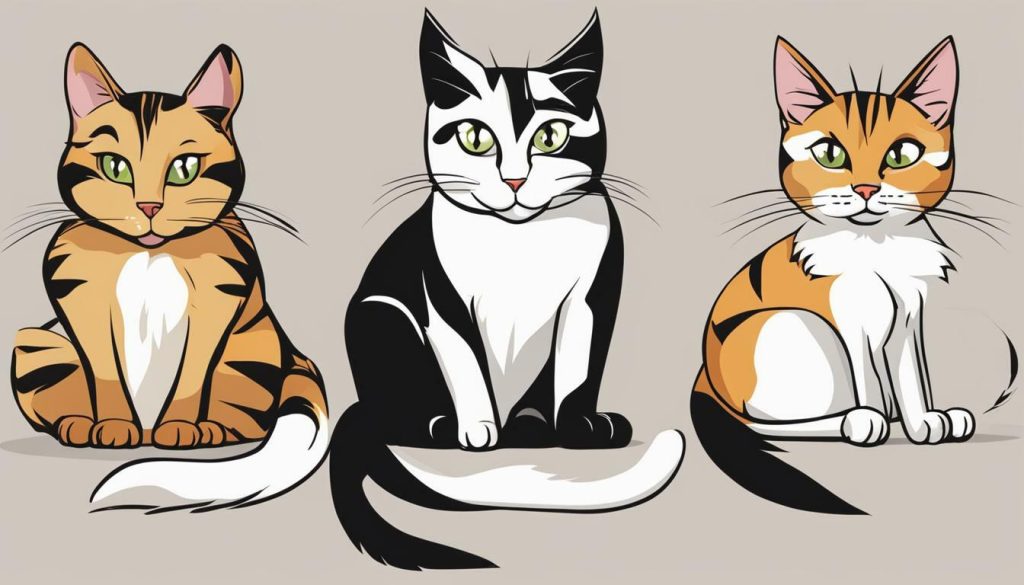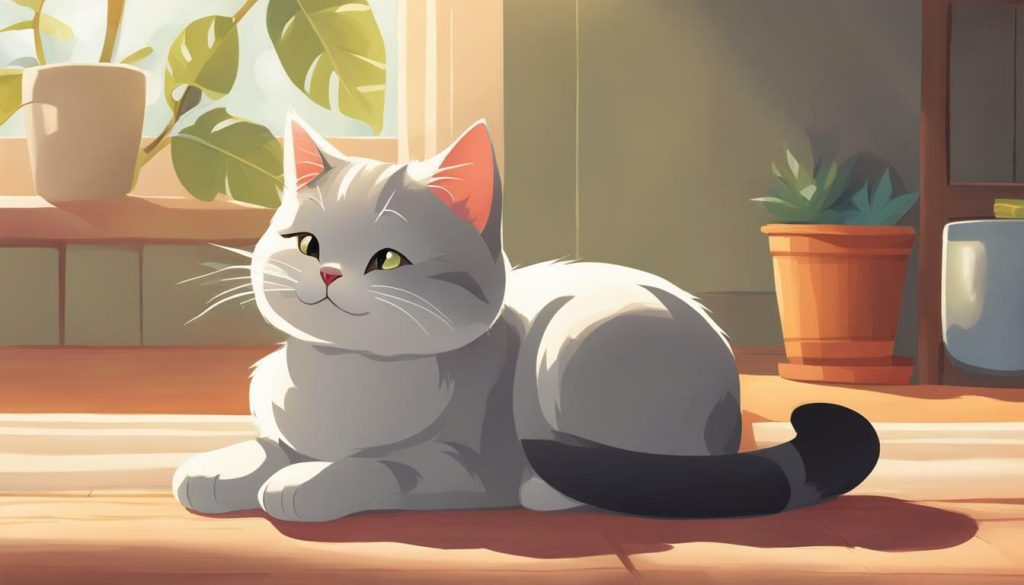Greetings fellow feline enthusiasts! As a professional cat lover and copywriting journalist, I am excited to discuss the fascinating topic of how cats sit. Have you ever wondered why your furry friend curls up into a tiny ball or stretches out into a relaxed sprawl? Or what their sitting positions indicate about their mood and intentions? Join me as we explore the intriguing world of cat sitting behavior.
- Cats have a wide range of sitting positions, each serving a unique purpose.
- Observing your cat’s sitting habits and styles can provide valuable insights into their emotions and needs.
- Understanding cat body language cues is key to interpreting their sitting positions.
- Decoding cat sitting positions requires knowledge of their various postures, such as the loaf position, the sphinx position, and the relaxed sprawl.
- By learning how cats sit, we can foster a deeper bond with our feline companions.
- 1 Understanding Cat Sitting Behavior
- 2 Conclusion
-
3
FAQ
- 3.1 Q: How do cats sit?
- 3.2 Q: Why do cats sit in different ways?
- 3.3 Q: What are some common cat sitting habits?
- 3.4 Q: How can I interpret my cat’s sitting positions?
- 3.5 Q: What is the significance of the loaf position?
- 3.6 Q: Why do some cats prefer to sit in the sphinx position?
- 3.7 Q: What does it mean when a cat sprawls out on their back?
Understanding Cat Sitting Behavior
As a cat owner, I’ve noticed that felines have a diverse range of sitting postures. But have you ever wondered why cats sit in different ways? Understanding their sitting habits is key to interpreting their behavior and building a stronger bond with your furry friend. Let’s take a closer look at feline sitting postures, why cats sit in different ways, and their common sitting habits.
First, let’s explore feline sitting postures. Cats can sit in a variety of ways, from the classic “loaf” position to the regal “sphinx” pose. The loaf position is when a cat tucks all four paws under its body, resembling a loaf of bread. The sphinx position is when a cat sits upright with its front paws tucked under its chest, resembling the Egyptian sphinx. Other common sitting positions include the relaxed sprawl and the perched sit.
So, why do cats sit in different ways? The answer lies in their mood and intentions. For example, a cat in the relaxed sprawl position is likely feeling comfortable and secure, while a cat in the perched sit is likely on high alert and ready to pounce. Understanding these postures can help you better read your cat’s body language and anticipate its needs.
Finally, let’s discuss common cat sitting habits. Cats are notorious for their love of comfort, often choosing soft, warm spots to sit and relax. They may also prefer to sit in elevated positions, such as on a windowsill or the top of a cat tree, to survey their surroundings. Additionally, cats may change their sitting position frequently throughout the day, from sitting to lying down to stretching out.
In conclusion, understanding feline sitting habits is essential to interpreting your cat’s behavior and needs. By recognizing their sitting postures and habits, you can better communicate with your furry friend and strengthen your bond.
As we have learned, cats have a variety of sitting positions, each conveying a different message. But how can we interpret these positions to better understand our furry friends? Let’s explore some common cat sitting styles and what they may mean.
The Loaf Position
The loaf position is a classic sitting style of cats. It involves tucking all four paws under the body and sitting squarely on the ground. This position indicates that the cat is relaxed and comfortable but also alert and ready to move quickly if necessary. If your cat is sitting in the loaf position and purring, it’s a sign that they are content and happy.
The Sphinx Position
The Sphinx position is a more upright sitting posture. The cat sits with its forelegs straight and its hind legs tucked under the body. This position is often seen in cats that are curious or watchful. The Sphinx position may also indicate that the cat is preparing to jump or pounce on something. If your cat is sitting in the Sphinx position, it’s best to let them have their space to observe their surroundings.
The Relaxed Sprawl
The relaxed sprawl is a sitting style that is often seen when cats are lounging around. The cat sits with its front legs stretched out and its hind legs splayed to the side. This position is a sign of extreme relaxation and comfort. If your cat is sitting in the relaxed sprawl, it’s a good time to pet them and show them some love.
Remember, while these are common cat sitting positions, every cat is different and may have their own unique style. A cat’s sitting position should be considered along with their overall body language to better understand their mood and intentions.
In the next section, we will conclude our exploration of cat sitting behavior and summarize what we’ve learned about these fascinating creatures.
Conclusion
I hope this article has helped you understand the intricate world of cat sitting behavior. By observing your cat’s sitting positions and body language cues, you can better understand their emotions and needs. Remember to consider the different feline sitting postures, such as the loaf position, the sphinx position, and the relaxed sprawl, as each indicates a unique mood or intention.
By building a deeper understanding of your cat’s sitting habits and styles, you can strengthen your bond and provide the best possible care for your furry friend. So the next time your cat takes a seat, take a moment to observe their posture and consider what they may be trying to communicate.
Thank you for reading and happy cat watching!
FAQ
Q: How do cats sit?
A: Cats have various sitting positions, including the loaf position, the sphinx position, and the relaxed sprawl. These positions can indicate their mood and level of comfort.
Q: Why do cats sit in different ways?
A: Cats may sit in different ways based on their surroundings, temperature, and level of relaxation. They adjust their sitting positions to find the most comfortable and secure spot.
Q: What are some common cat sitting habits?
A: Cats often curl up in the loaf position when they feel safe and relaxed. They may also sit in the sphinx position to be alert and ready to pounce. Additionally, cats may sprawl out on their backs when they are completely at ease.
Q: How can I interpret my cat’s sitting positions?
A: To interpret your cat’s sitting positions, observe their body language cues. Pay attention to their overall posture, tail position, ear position, and eye contact. This will help you understand their emotions and needs better.
Q: What is the significance of the loaf position?
A: The loaf position, where a cat tucks their paws under their body, indicates that they are relaxed and content. It is a sign of trust and comfort in their environment.
Q: Why do some cats prefer to sit in the sphinx position?
A: The sphinx position, where a cat sits upright with their front legs extended, allows them to stay alert and ready for action. It is often seen when cats are observing their surroundings or preparing to chase something.
Q: What does it mean when a cat sprawls out on their back?
A: When a cat sprawls out on their back, exposing their belly, it typically means they are showing extreme relaxation and trust. It is a vulnerable position that indicates they feel safe and comfortable in their environment.











